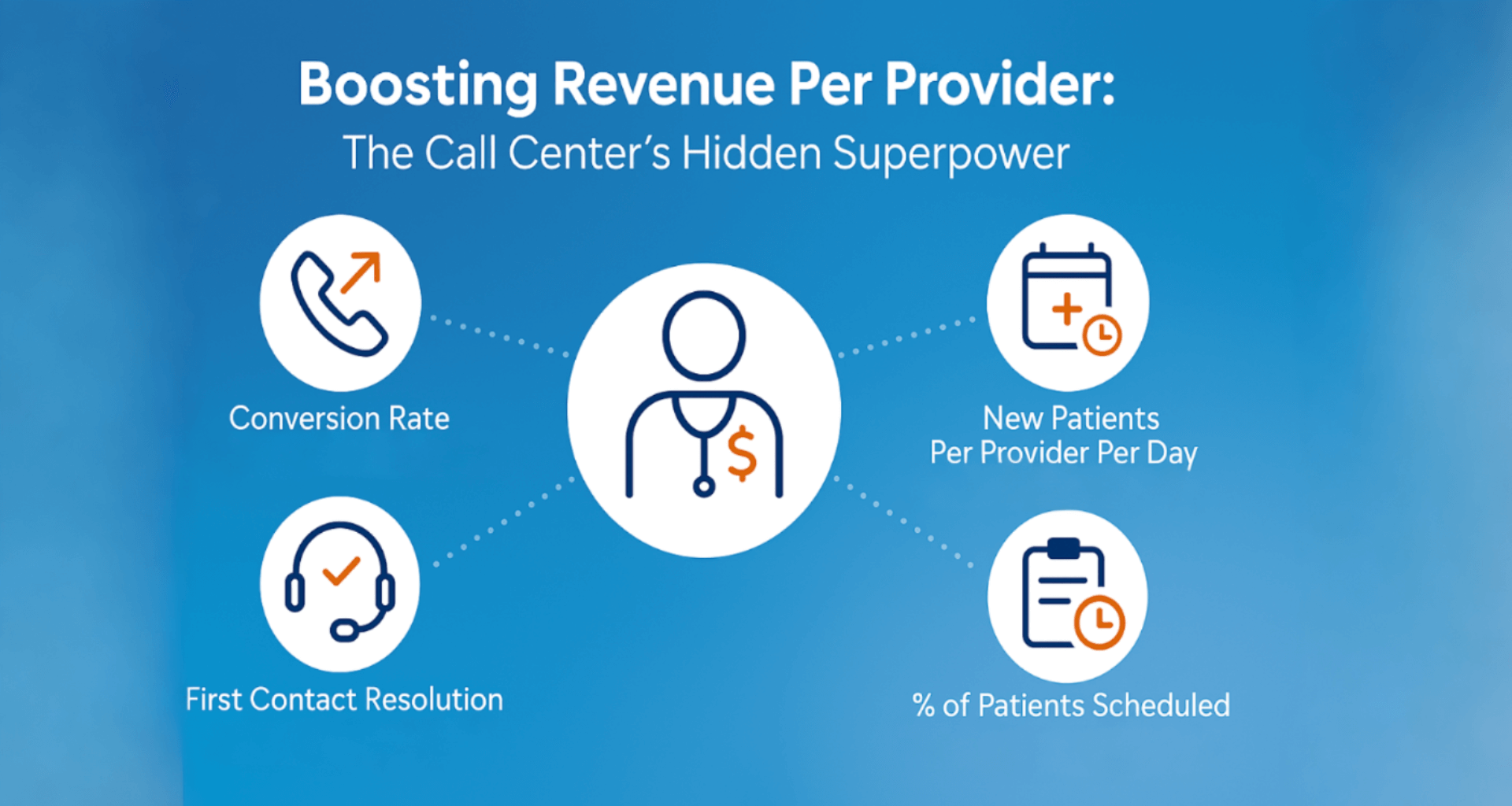
The problem with your telehealth workflow management
You’re likely tired of doing busy work to help patients—a problem facing many providers—but there is a solution, and it’s a very simple solution: automation. Automation makes your work easier, faster, and smoother. Automation creates simplicity—and simplicity is the key to powerful telehealth.
Telehealth workflows are the processes and tasks performed by medical professionals remotely. Telephone nurses, medical assistants, operations managers, call center agents, and other telehealth employees all have role-dependent workflows, but because healthcare is a team sport, workflows between different departments are interdependent. A workflow flaw in one department reverberates to other areas, and eventually hurts your entire organization.
A single faulty workflow cripples efficiency, drains revenue, and damages the telehealth experience for patients. For patients to have excellent experiences, your staff must have seamless workflows. One cannot exist without the other.
As such, it is critical that all your workers—from your telephone nurses to your agents—have dynamic workflows: workflows that optimize both your operations and your patient care.
Convoluted & confusing telehealth workflows cause enormous difficulties for healthcare providers—& thus for patients
Workflows in the American healthcare space are notoriously complex and inefficient. This is because the industry teems with countless different apps, databases, protocols, tools, regulations, and communication systems. Telehealth professionals must navigate this maze, every day, to perform their jobs, which makes for nightmarishly sluggish, error-prone, and expensive workflows. It also frustrates and aggravates telehealth employees, who are prone to burnout because of the difficulty of their jobs.
Healthcare research evidence suggests that workflow planning is difficult because many providers have intricate procedures that have become ingrained in the organization over time. Because health professionals must respond to patient needs in a timely manner, many workflows evolved in response to immediate necessities; they were not designed to meet the needs of the entire organization.
Among the most urgent problems facing telehealth workflow management are:
- Disconnected systems, patient databases, and information resources: Patient and provider data, including electronic health records, is often scattered across different systems and departments, forcing telehealth employees to conduct laborious, time-consuming, and costly processes to perform necessary tasks. And they must do all of this while maintaining HIPAA compliance and meeting specific practice management requirements.
This particular problem can be solved with a Patient-Provider 360 system, which centralizes all patient and provider data into a single platform, so that it is immediately available to healthcare staff exactly when they need it.
- Unreliability and inconsistency: Many telehealth processes, particularly informal methods that have been habituated into the organization over many years, tend to collapse under pressure. This causes bottlenecks and delays, at crucial moments, which damage every department and can cause catastrophic product loss.
- Poor and outdated communication systems and phone apparatuses: Without an effective communication system, successful telehealth workflow management is impossible. Many medical practices and call centers use outdated and complicated phone processes which require extensive training—often with 100+ page paper training manuals. These phone staff workers, because of the difficulty of their jobs, have extremely high turnover rates.
The phone staff who do stick around are inefficient and ineffective. They have lengthy handle times, low first call resolution, and high error rates—all of which translates to long hold times for patients, poor care quality, and dismal patient satisfaction scores.
The workflow management challenges facing phone staff don't only wreak havoc on the provider's bottom line; they can also lead to negative patient outcomes. - Disorganized information transfer: If vital patient data isn't properly transferred—during a shift change, for instance—or if a physician's medical records are lost, patients get inadequate treatment. When patient information isn't shared promptly and accurately, the patient often must be readmitted, which further depletes time and resources.
- No patient self-scheduling capability: Providers who don't utilize patient self-scheduling software must schedule every appointment by phone. And as explained above, scheduling by phone, if the provider hasn't invested in AI-powered call support software, results in scheduling mistakes, phone tag, and no-shows.
When patients can schedule and reschedule their own appointments digitally, these scheduling workflow problems vanish, almost overnight, because call volume plummets, putting significantly less stress on phone staff - Too many steps: Telehealth workflows often involve many steps, and each of these steps, both clinical and non-clinical, comes with its own set of protocols and procedures. This makes it difficult for employees to keep track of what needs to be done and when—which in turn exacerbates inefficiencies and mistakes.
- Constant modifications: Telehealth workflows are frequently changed or updated, and it's hard for employees to keep up with these alterations. Confusion, resentment, and poor productivity are the inevitable result.
- Out-of-touch workflow management design: Telehealth workflows are often designed without input from the people who actually use them. This frustrates employees and damages morale—both of which ultimately harm the provider's operation.
- Phone staff burnout: Because of the difficulties outlined above, telehealth phone staff are likely to burnout and quit. One of Keona’s clients—a primary care provider in Florida—had one-third of their call center staff resign because the work was too difficult. The call queues were too long and the scheduling rules were too complicated.
AI-powered healthcare workflow solutions
Giving patients amazing telehealth experiences, because of the challenges described above, has proved elusive for many providers—but it need not be for you.
Telehealth’s deep-seated workflow problems do have a solution: Artificial Intelligence.
AI-powered software, customized to each employee's specific workflow, automates or streamlines the processes typically executed manually by human staff. A telehealth workflow solution empowers staff to perform their jobs with remarkable dynamism and efficacy.
Virginia Women’s Center, after automating their workflows with Keona’s telehealth software, reduced staff onboarding time by 70% and increased self-scheduled appointments to 25%—in just six months—without a dime spent on marketing.
Sophisticated and holistic telehealth software, also known as a healthcare CRM, can automate almost any telehealth task, which either eliminates the need for human staff or assists human staff by streamlining their processes. The result: Providers hire less staff, and the staff that providers do hire are tremendously productive.
AI-powered workflow management software enhances a wide variety of processes, both clinical and non-clinical:
- Appointment scheduling: Telehealth workflow management software can intelligently schedule appointments, which reduces or eliminates the need for phone staff—and streamlines phone staff workflows.
The software helps phone staff more effectively handle calls by guiding them in real-time so that they can quickly and correctly match patients with the optimal provider for both the patient's needs and the physician's preferences.
- Approvals: The healthcare workflow management software can automate approvals and new patient registration.
- AI-assisted call support: A telehealth workflow solution, thanks to automated information transfer, optimizes workflows for call center staff, who are able to handle 50% more calls per hour thanks to improved first call resolution.
- Consultation: The software allows a care team to automate steps in the clinical consultation and triage process—including digital symptom screening—which uses natural language processing algorithms to accurately and speedily screen the patient's symptoms.
- Automated medical billing: Healthcare employees aren't burdened with manually configuring and mailing healthcare bills. The workflow software automates the medical billing process, which allows patients to access and pay their healthcare expenses digitally, with full price transparency.
- Logistics, business intelligence, and information technology: Manually managing logistics drains time, resources, and revenue from medical providers. AI-powered workflow solutions automatically organize information, which takes an enormous burden off of logistics staff and allows providers to create data-based marketing campaigns.
- AI-automated patient engagement: Staff don't need to call patients with appointment reminders or email patients with important educational information. The workflow software automatically carries out these and other engagement tasks.
- Seamless communication between different departments: One of the biggest impairments to workflow efficiency is convoluted communication systems, which slow processes across the entire organization.
Workflow software streamlines communication—which means every employee, in every department—can perform their tasks without playing phone tag or waiting for a response.
- HIPAA compliance: The workflow management software has built-in HIPAA compliance. Many telehealth processes are made sluggish because employees must ensure—before, during, and after every task—that they are meeting HIPAA regulations and thus not putting the provider in legal jeopardy or, even worse, risking patient safety.
A well-designed workflow management solution has built-in HIPAA protocols, and thus automatically ensures HIPAA compliance is met, at all times, without the staff even needing to think about it.
- Physician control: Many doctors believe that automating their staff's workflows means they will lose control—most importantly over their scheduling preferences. But the opposite is true: Physicians gain more control because workflow software makes less mistakes than their human schedulers—and the software encodes provider preferences—which means the doctor's schedule is 100% accurate and full.
The immense benefits of streamlining & automating telehealth workflows for healthcare contact centers & medical practices, from increased revenue to better patient outcomes
AI-powered workflow solutions produce big rewards for healthcare providers. And because automating workflows is remarkably beneficial for healthcare providers, it is also remarkably beneficial for patients. And because it is remarkably beneficial for patients, it is also remarkably beneficial for the entire American health system, which currently faces massive challenges, including dire staffing shortages.
Benefits of optimizing existing workflows with AI-powered software include:
- Staffing: Self-scheduling reduces incoming calls, and automation lowers handle time and improves first call resolution. EmergeOrtho, after implementing Keona’s telehealth software, doubled their number of physicians in two years without adding any additional staff to their contact center.
- Exceptional patient care and better patient outcomes: The biggest beneficiaries of workflow automation isn't medical staff—it is patients.
Amazing patient experiences are the direct result of amazing staff experiences. When staff workflows are optimized, patient care is simultaneously optimized. To improve patient outcomes, you must first improve your staff's processes.
- 100% scheduling utilization and less no-shows: Every scheduling slot gets filled—and patients get SMS reminders with links for rescheduling or canceling.
And thanks to automated waitlisting, when an appointment is canceled, notifications are immediately sent to patients on the waitlist. Anyone who wants an earlier appointment can usually get it.
- Patient satisfaction: Because patients, thanks to streamlined workflows, receive superior care, they are not only healthier, but happier. And happy patients tend to leave providers positive reviews.
- Stand out from the competition: Excellent self-service technology is easy to blast across the internet if you empower your patients to schedule directly from Google, Bing, or Facebook. Your organization will be able to compete against even the most well-funded entrants.
- Less medical errors: Automating steps in the workflow process greatly reduces the chance of human errors. Errors plague providers who rely on manual management of complex workflows. Automating workflows reduces mistakes, which in turn increases revenue.
- Seamless patient admissions: AI-powered workflow software automates new patient admissions. Patients can self-register themselves digitally, which saves time and resources for healthcare providers.
- Optimized clinical communication: A healthcare workflow solution optimizes communication between patients and staff. Because the staff are equipped with an AI-assistant, patients don't spend precious minutes waiting on hold or playing phone tag. Calls are shorter, and first call resolution is higher.
- Improved information transfer: One of the biggest problems facing healthcare workflow management is sloppy information transfer. Information is often lost when shared amongst different departments. By automating information transfer, patients are less likely to require readmission, which in turn saves time and money.
- Legal compliance and risk reduction: Because the automation technology has built-in compliance mechanisms, legality and patient safety are assured at all times. The staff need not exhaust themselves manually maintaining HIPAA protocols.
- Maximized revenue: The end result of optimizing practice management processes with AI-powered software is obvious: more revenue. For providers who are cash-strapped, AI-automating their workflows is the best way to dig themselves out of their hole.
The future of healthcare workflow management
As technology improves, telehealth workflows will continue to improve. The key to effective workflows is simplicity. Well-designed workflow solutions engender this simplicity.
Health systems need the power to conduct any conceivable telehealth service—from medication management to treatment evaluations to patient outreach—with the click of a button.
Because many providers' workflows are inefficient, time-consuming, and resource-heavy, these workflows are not only a drag on the provider’s individual operation; they are a scourge on the entire U.S. health system.
Technology that cures workflow maladies will, eventually, be adopted by everyone in the industry. Healthcare senior management—the people who make critical decisions—should therefore seize the opportunity to invest in new technology, rather than cling to old habits, before it’s too late.
To learn more about how technology is transforming healthcare, check out our blog: "How Providers Can Win Big From Healthcare Consumerism Trends."
Posted By

Peter Black is an author, consultant, and digital health expert based in Los Angeles. He received his master’s degree from UCLA.
Related Post
July 30, 2025
when patients call, they’re not just dialing a number—they’re reaching for help. and...
April 10, 2025
in healthcare, every interaction is a decision point—one that can impact outcomes,...



